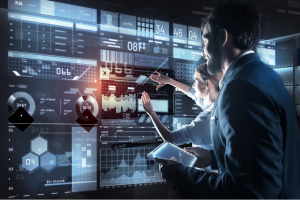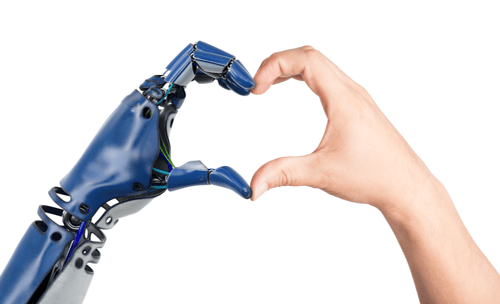If there’s something we can all agree on, it’s that technology is the driving force for the evolution of work. Tech is no longer merely a thing we just use. It’s embedded in our lives, work, companies, and even our bodies (woah).
We’ve seen glimpses of the potential that automation and Ai have on jobs and companies. From Ai algorithms that personalize customer experiences, security surveillance Ai, process automation and even self-driving cars. And yet, there’s still much more to come.
So, let’s explore what impacts these technologies have on future jobs and businesses.
Loss of jobs or new opportunities created?

There can be a divide when it comes to Ai, automation and work. Some people fear that “robots” will be stealing our jobs. Others prefer to see it as the rise of new opportunities.
While there’s no denying that automation and Ai will displace jobs, it’ll also open the door to many new jobs.
Oxford Economics predicts that up to 20 million manufacturing jobs worldwide will be lost to robots by 2030. McKinsey Global Institute predicts that about 25% of workers will be displaced for countries adopting Ai rapidly.
Meanwhile, and on a more positive note, the World Economic Forum states that automation will displace 75 million jobs but generate 133 million new ones worldwide by 2022 (I’m not great at math, but that’s close to double in new job creation). Gartner also says that AI-related job creation will reach two million net-new jobs in 2025.
I read an article that said a Drone manager is a new emerging role. Um, where do I sign up?
We must also remember that the displacement and emergence of jobs isn’t a new thing. Through all the different industrial revolutions, we’ve seen jobs shift and change constantly – long before the Ai days. We no longer have Toad Doctors, Elevator Operators or Pinsetters. However, we now have Cloud Specialists, Big Data Analysts and App Developers – jobs that didn’t exist 10 years ago (remember those pre-smartphone days? I still miss dramatically closing my flip phone).
Change isn’t always easy, but it’s the only constant (queue inspirational quote). So, to prepare for these future work shifts, organizations will need to adapt and professionals will need to acquire new skill sets.
Working Together with Technology
Other than jobs lost or jobs gained, automation and artificial intelligence will change the jobs that remain. This technology will be adopted to most jobs as machines will complement human labour in the workplace. Ai and automation will simply become tools that will help us do their jobs better — a lot better. For instance, the typewriter vs laptop. I can’t imagine making a mistake halfway through the page on a typewriter and having to restart. I digress.
At Oomple, we see Ai’s benefits as a highly useful tool. We use it to match freelance professionals to companies seeking on-demand talent. Using this Ai tech leads to more efficient, more cost-effective, faster and more suitable connections between professionals and companies.
Essentially, rather than automation and Ai serving as a replacement for human intelligence, they will serve as a supporting tool. These technologies will complement our work or take care of some tedious, repetitive or even dangerous tasks. This leaves us more room to focus on being creative and innovative.

New Skills and Education Requirements
As occupations adapt, so will skill and educational requirements. Companies will need to redesign work to ensure that humans work alongside machines effectively.
This redesign is already on its way. For example, Amazon announced they are spending $700 million to train approximately 100,000 workers by 2025. This training is to help them move into more highly skilled jobs proactively. The future of work and the role of automation tech calls for companies to make adjustments. Amazon acknowledges that: ” advances in automation technology will handle many tasks now done by people”. Thus, leading to a shift in those current employees’ roles.
Conclusion
While we can be sure that Ai and automation will lead to transitions and potential challenges, we can also expect the emergence of new opportunities and new types of business’ that we can’t even imagine now.



